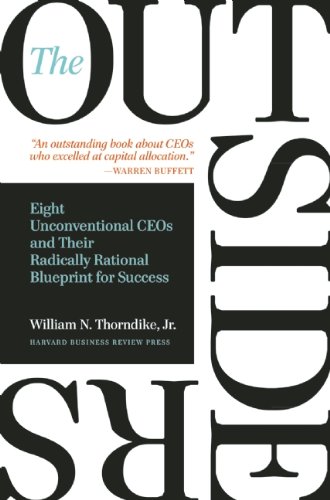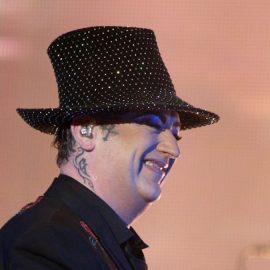

This article is an excerpt from the Shortform summary of "The Outsiders" by William N. Thorndike, Jr. Shortform has the world's best summaries of books you should be reading.
Like this article? Sign up for a free trial here .
How did Henry Singleton take Teledyne from a new company to one of the biggest conglomerates of the twentieth century? What strategies did he use?
Henry Singleton was the co-founder of Teledyne. He founded the industrial conglomerate with a colleague at the age of 43, after working for other similar companies. Teledyne is currently involved in businesses ranging from aerospace electronics to digital imaging.
Find out how Henry Singleton built this company using aggressive growth strategies.
Henry Singleton: Building a Conglomerate
Founder Henry Singleton served as CEO from 1960 to 1986, taking it through three phases with very different activities:
- Rapid expansion of the conglomerate through acquisitions
- Aggressively buying back shares with the company’s free cash flow
- Spinning out its subsidiaries when performance began stagnating
Henry Singleton took advantage of the business dynamics that allowed conglomerates to grow and thrive. In 8 years ending in 1969, he purchased 130 companies in a wide range of industries, including specialty metals and insurance. Most companies were purchased using Teledyne stock.
In 1967, Henry Singleton acquired Vasco Metals and promoted its president (and Singleton’s former roommate at the Naval Academy) George Roberts to president of Teledyne. As with Burke at Capital Cities, Roberts became the operating manager of Teledyne, freeing up Henry Singleton to focus on strategy and capital allocation.
In 1969, Teledyne’s stock began falling in P/E ratio, and acquisition prices began rising. Realizing that Teledyne’s stock would no longer be profitable for acquisitions, he laid off his acquisition team and never made another material acquisition. Instead, they turned their focus to increasing margins at business units. Through the 1970s and 1980s, Teledyne saw remarkably high return on assets of 20% or greater.
This generated remarkable free cash flow, which was used by Henry Singleton’s Teledyne in a series of aggressive share repurchases.
At the time, the conventional wisdom held that repurchases were done only by weak companies that lacked investment opportunities. But given Teledyne’s low P/E ratio and high acquisition prices, Singleton reasoned that the best use of cash was to repurchase shares. Over 12 years, he bought back a staggering 90% of Teledyne’s shares, becoming a pioneer in share repurchases as a financial strategy. As a result of share repurchases, from 1971 to 1984, Teledyne’s earnings per share grew by 40-fold.
Acquisition Strategy
Henry Singleton chose his acquired companies deliberately. Like Murphy at Capital Cities, Singleton had a financial benchmark for acquisitions—never paying more than 12 times earnings, and often paying single digit-multiples. In comparison, Teledyne’s stock price ranged from 20 to 50 times earnings, thus making many acquisitions a great deal.
Henry Singleton also chose to focus on companies that were profitable, growing, and in leading market positions. They were often in niche markets. He avoided acquiring struggling turnaround companies, a common target of other conglomerates at the time.
Share Repurchases
Henry Singleton’s share buybacks were in a class of its own in its level of aggression. Over 12 years, he bought back a staggering 90% of Teledyne’s shares, at one point buying over 20% in a single tender offer. He acted deliberately at opportune times, when Teledyne’s stock price was low; when interest rates were low, he would use debt to buy back stock.
Decentralization
In the era of conglomerates, the idea among many companies was that central headquarters could find large synergies among its subsidiaries. Thus, they employed armies of executives to conduct planning and strategy.
In contrast, Teledyne’s headquarters had fewer than 50 people, while its company employed over 40,000.
They even had a small board, featuring just 6 directors, including Henry Singleton.
Focus on Margins
Internally, the key metric was the Teledyne return, an average of cash flow and net income. For each business unit, this metric determined the general manager’s bonus compensation. Focusing on this internal metric helped Teledyne achieve best-in-class profitability and cash flow, which fueled their growth.
With Henry Singleton, Teledyne grew. He ensured the company’s growth by employing several strategies you see with other outsider CEOs: he kept decision making power limited to a few people, and participated in stock buybacks that let the company maintain ownership and grow profits.

———End of Preview———
Like what you just read? Read the rest of the world's best summary of William N. Thorndike, Jr's "The Outsiders" at Shortform .
Here's what you'll find in our full The Outsiders summary :
- What great CEOs like Warren Buffett do that average CEOs don't
- How to master the art of capital allocation
- How to be a great manager that your team is excited to work with






